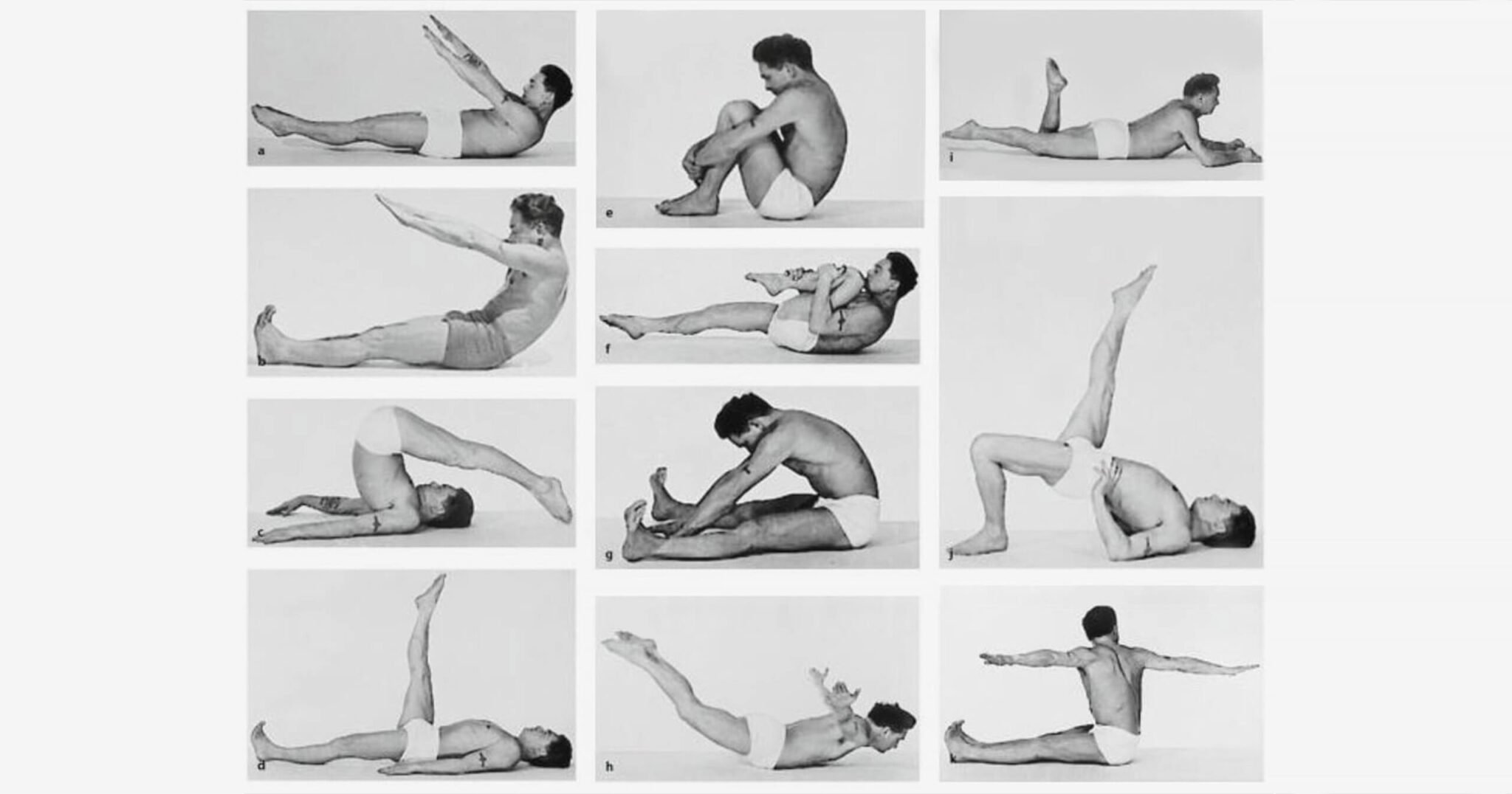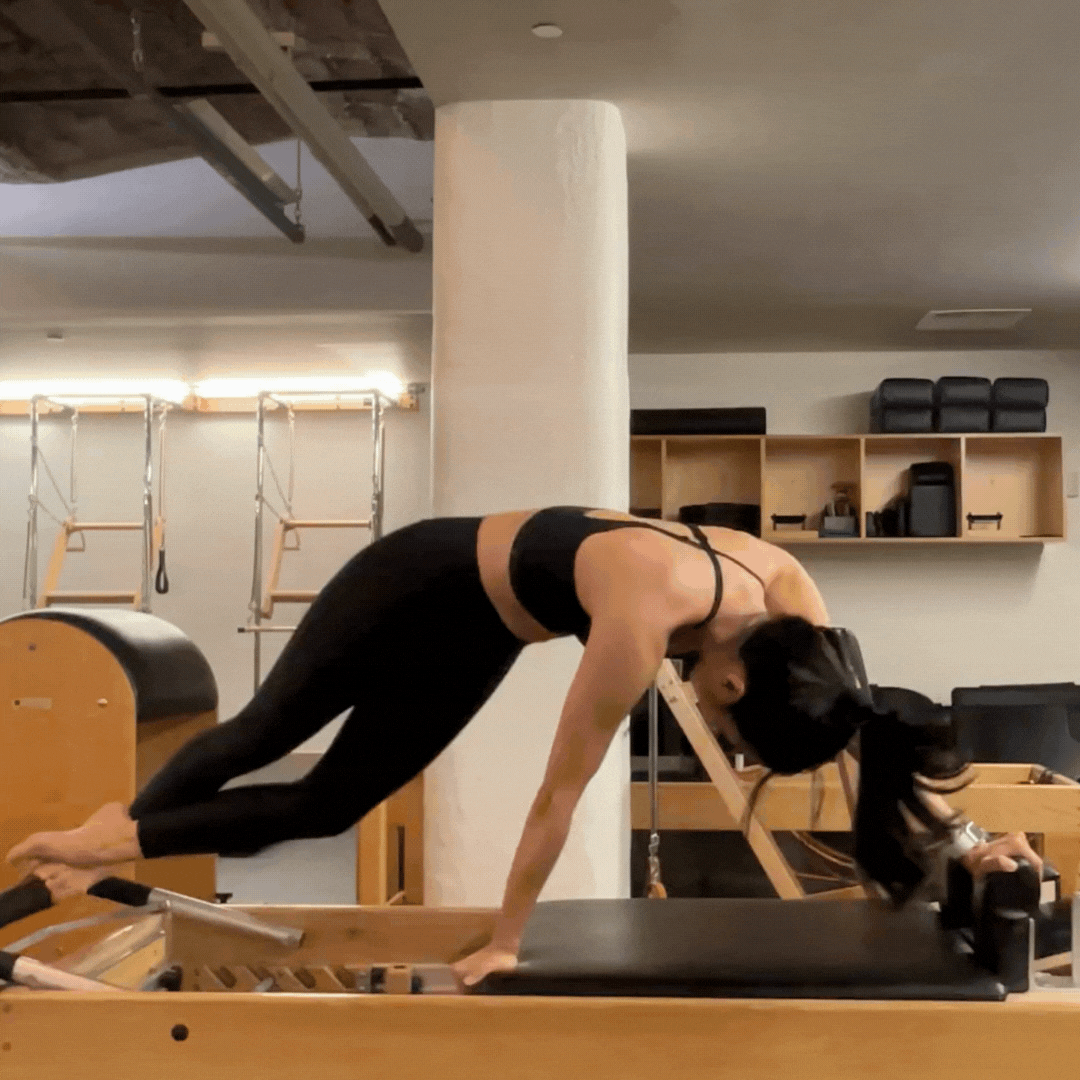What is pilates and why everybody should be doing it
Linda (above) likes to powerlift; weekly private sessions have made an impact on her performance and recovery. Above, she performs side ups on the ladder barrel at an intermediate level.
If you make this one change to your habits, you will gain strength, flexibility, mobility and resistance to aging and physical injury. It’s the exercise that many trainers want their clients to do. It’s the exercise many trainers try to emulate in their own programs.
Getting started is as simple as going out to dinner once a week. No research required, no stretches to have to remember to do after an exhausting workout.
It’s the exercise everybody should be doing. It’s pilates.
That sounds too good to be true, but just because it can be simple doesn’t mean results are guaranteed without effort.
Pilates is having a moment. According to GoogleTrends, the search interest for the word “pilates,” as of December 2023, is nearly three times higher than it was in December 2020. As with many formerly niche subject matters like bullet journaling or veganism, social media has made pilates more widely known and accessible. As I write this, Club Pilates is growing and opening its seventh location here in Chicago.
Joseph H. Pilates doing his eponymous exercise (images from Return to Life).
Pilates, named after its inventor Joseph H. Pilates, has been around for about one hundred years. The fact that this exercise has lasted so long—as other fitness trends have come and gone—attests to the power of pilates. And there are no signs of it slowing down.
Snake and twist on the pilates reformer
It’s exciting to me when people express interest in or have tried pilates. It’s still, however, relatively unknown and misunderstood. Modern trends and social media have influenced our perception of what pilates is and what its true potential can be, which is why I feel compelled to answer the question what is pilates?
I’m a 500-hour certified pilates instructor, and this is my totally biased, overelaborated, and unsolicited answer.
Pilates, the exercise
To put it generally, pilates, the exercise, is exercise that can be performed on a mat or pilates equipment.
There is no official standard pilates program, but there are exercises that are common practice—such as the roll up, shoulder bridge, hundred.
Any pose or exercise that can be performed on a mat could be part of a pilates workout.
OK, but what about exercises like…
Squats? If there’s no barbell, then it can be considered pilates.
Arabesque? Barre, but could still be pilates.
Push up? Calisthenics and also pilates.
Down dog? Yoga, but also—you guessed it—pilates.
From a taxonomy standpoint, the exercise itself need not be anything specific to be categorized as “pilates.” In fact, Mr. Pilates ravenously took inspiration from everywhere, from rowing, boxing, and acrobatics. The rule of thumb in pilates today, as it was then, is to leave no stone unturned, no turn or twist untraversed.
Contrology, a pilates theory
To define it in literal terms, pilates is a low-impact, holistic, mind-body exercise method that means to strengthen, stabilize, and mobilize the body in all planes of motion, with particular focus on the core and spine. In other words, this is what one does in pilates.
But, like me, you must want to know what makes it different!
What people need to know about pilates is this:
Pilates is the education of how to control and move the body.
This is what pilates is when applying the theory of Contrology. In fact, Contrology was the official name during Joseph Pilates’ lifetime. More than just a fancy moniker, it aptly conveys the essential qualities of pilates, such as precision, coordination, and form.
(I won’t go into detail about how Mr. Pilates developed Contrology. You can read about that in his book Return to Life through Contrology.)
Just as one can mindlessly lift weights, run, or throw punches, so too can pilates be practiced as a series of random exercises with no attention to form or purpose. When applying Contrology, however, pilates becomes exercise for the body and brain. And then something beautiful evolves, just as in yoga, dance, or martial arts—pilates becomes an art form. It builds on itself and promises progressively harder and complex challenges. Pilates is never easy or mundane and carries skills that you continue to master for the rest of your life.
Contrology may not make sense the first time you do pilates, maybe not even the tenth. Often times, it takes working in a private session for Contrology to click. Once you train with an experienced instructor who applies the theory of Contrology, you’ll start to realize that pilates is not just exercise and not all instructors apply Contrology the same way.
Some of you may think “I know how to move my body.” If so, that’s great. But even professional athletes, people who move for a living, constantly find new ways to move better. In fact, many professional athletes and celebrities practice pilates regularly, such as Tom Brady, Tiger Woods, Cristiano Ronaldo, Miley Cyrus, and Lady Gaga. Once you work with an expert pilates trainer, I guarantee you will still discover new ways to be challenged.
“What people need to know about pilates is this: pilates is the education of how to control and move the body.”
Why do pilates?
I told you what pilates is, but why does pilates matter?
Simple answer: not all movement is created equal.
It goes without saying that we exercise to look and feel better about ourselves. Whether your motivations are superficial or profound, know that pilates can give you all you’re looking for and more. Contrary to how it’s often marketed—wrapped up in dreams of a trophy body and airy pastel studios—pilates is, in fact, the furthest thing from superficial.
There is no such thing as bad exercise, but we should all aim for well-rounded, intentional movement. What makes pilates different is that it trains deep spinal muscles and smaller muscles responsible for stability and control. Unlike other exercise, pilates strengthens the body uniformly, creates long-term mobility and resistance to injury—things that are as essential for our health and quality of life as muscular or cardiovascular strength.
According the American Association of Neurological Surgeons, 75-85% of Americans experience some form of back pain during their life. That’s a shocking figure if you consider the fact that many of these people are probably healthy and active.
Back pain is just one of many symptoms of our modern lifestyles (e.g. sitting all day, looking at screens) and movement patterns. Pilates addresses the latter, and the solution isn’t as simple as moving more. It’s to move better and with more variety.
Through the framework of Contrology, what makes pilates unique is movement in all planes of motion and maximizing muscular co-contraction. In terms of variety of movement, pilates is just about far and above any other exercise.
You will find a comprehensive list of benefits of pilates here, but I will highlight some key ones below.
Improve functional movement and overall quality of life
Increase body awareness and motor control
Improve performance, stamina, and strength
Improve posture
Improve joint mobility and overall flexibility
Minimize injury and enhance recovery
Want to realize the benefits of pilates? Read about private pilates training.
At the end of the day, there is no right or wrong way to do pilates, and there is no right or wrong intention for doing pilates. Any (safe) movement is better than none; more movement is better than less. But a comprehensive, well-designed pilates program (and instructor) will help you connect deeply with your body.
Contemporary vs. classical
In its early years, studios taught a traditional series of exercises that never changed from class to class. This was to preserve the method taught by Joseph Pilates and some of his immediate successors, and this style is often referred to as “classical pilates.”
“Contemporary pilates” is anything that isn’t “classical.” You are more likely to come across contemporary pilates classes than the rigid and highly coordinated classical style. That’s because pilates has evolved as more instructors and exercise equipment-makers sprinkled in their creativity. While there are pros and cons to each style, I believe innovation has made pilates more interesting and accessible to the general public.
But sometimes pilates is like the wild west, and with it is a revolving door of people and products attempting to reinvent the wheel. Some are good, some not so much. The result is often times a divergence from the Contrology methodology.
Not only do megaformers (left) and pilates reformers (right) look different, but so is the teaching methodology behind each one.
Studios like Solidcore and Studio Lagree utilize reformer look-a-likes that enhance certain exercises but ignore others. On social media, anybody can claim to teach pilates, sometimes with no professional certification at all. Despite progress in science and cultural norms, even certified instructors still rely on deceptive marketing tactics and antiquated fitness tropes to capture attention. As the industry grows, so too will grow the opportunities to enhance, celebrate, and exploit with every iteration of pilates.
Joseph Pilates remained in excellent physical shape thanks to his exercise, whether he was 57 (left) and 82 (right).
Because of its potentially empowering benefits, it’s a shame that the concept of Contrology has been relegated to the history books. In an industry that hyperfixates on unrealistic body shapes, unhealthy dieting, and unattainable perfection, an exercise method that is accessible, effective, and empowering is the physical education that we all should have received. But thousands of pilates instructors work hard everyday to preserve the essence of pilates, and it’s never too late for anyone to start.





